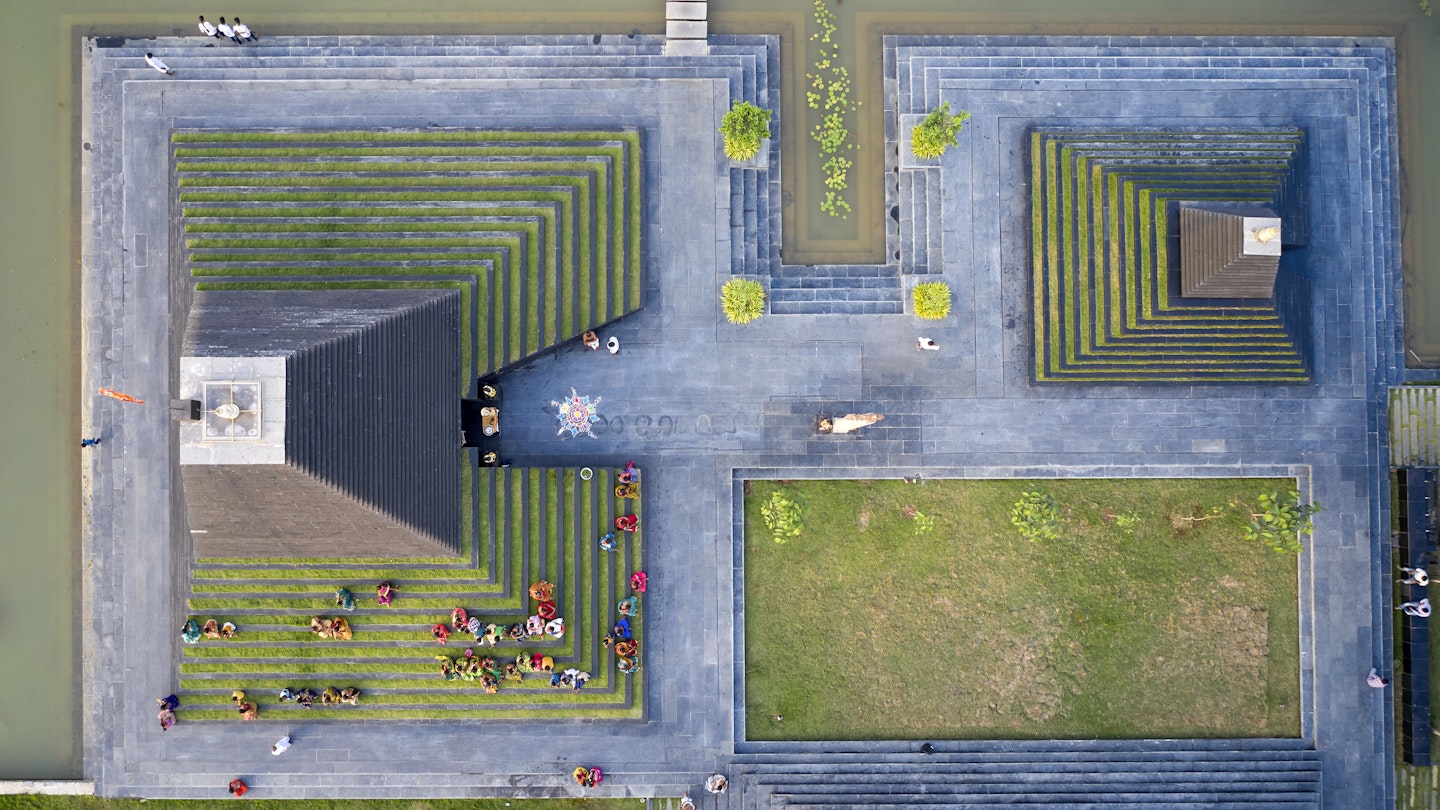Discover the Balaji Temple in Andhra Pradesh, India
An eye-catching black limestone temple, surrounded by water, has been built in Andhra Pradesh in India. This temple serves as a new gathering area and place of worship for the community, designed to be both beautiful and functional. It is currently open for public visits.
Constructed and operated by JSW Cement Ltd, the Balaji Temple is located in Bilkalguduru Village. The project was initiated as part of a community outreach program for the residents of surrounding villages near Nandyal. Initially, the site was planned to be close to the JSW plant; however, local residents requested the temple be moved further towards settlements and fields.

The Balaji Temple features two black limestone shrines dedicated to the deities Balaji and Varahaswamy. Visitors can access these shrines by entering the buildings. Furthermore, the temple grounds include green spaces where the local community can gather for recreational activities. Additionally, the temple has been built around a newly engineered water source, essential for the area, which is known for its cotton and chili farms.
Previously, this agricultural land benefited from a natural canal that has since dried up. To address this issue, the architects cleverly redirected water from a nearby limestone quarry and installed a water tank to maintain a permanent supply. This initiative has not only reinstated vital water access but has also created more gathering spaces along the banks for community interaction.
The architectural design of the Balaji Temple draws inspiration from the country’s iconic stepwells, known locally as baolis, vavs, and kunds. These structures serve as manufactured storage systems that allow people to reach a water source by descending steps.

The design of the temple, crafted by sP+a architects, utilizes locally sourced black limestone. This unique architectural choice posed several challenges during the development and construction phases. Moreover, the team aimed to honor traditional temple forms while ensuring the structure’s relevance and performance under modern standards.

The planning process for the temple was influenced by a 10th-century temple dedicated to the same deity at Tirupathi in Southern India, which also includes the Balaji and Varahaswamy shrines, along with a Pushkarini (water tank).





